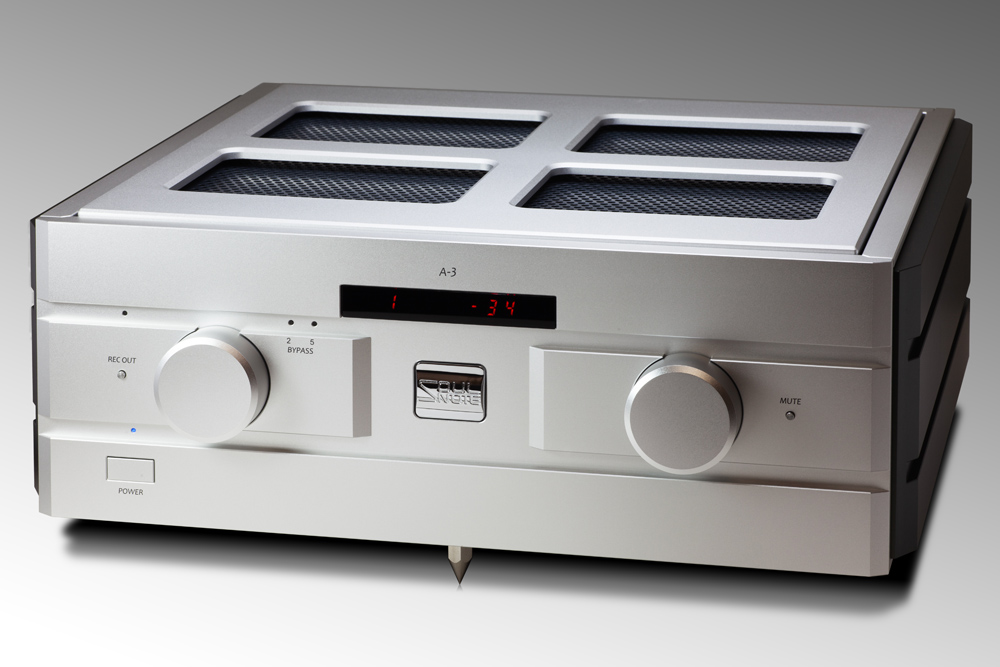What do you get when high-level ex-Marantz, Philips and NEC personnel, with a combined experience into three-figures, join forces with a fervent desire to penetrate the higher echelons of high-end audio? You get Soulnote, that’s what, a Japanese company HQ’ed in Kanagawa, Japan. Soulnote has hit the market with a stream of analogue and digital components featuring innovative engineering, a mature design language, and world-class build quality. The company is highly revered in its home country while also receiving high praise, and increasing interest, from audio enthusiasts around the globe. Yeah, it’s also earning some sideways glances from high-end competitors, I’m sure. So, here, I present Soulnote’s top-tier, solid-as-a-brick A-3 integrated amplifier.
Soul Man
The Soulnote A-3 integrated amplifier is a distinctive statement piece. I say this based on my own subjective scrutiny, of course, but I also base it on remarks made by several visitors who gazed eyes upon it. Both industry folks and non-audio peeps. The A-3 is superbly finished while being expertly constructed and, to all those eyes, rather aesthetically elegant.
In my intro, I mention the substantial off-the-tap design experience available at Soulnote. Indeed, ex Marantz Japan director Norinaga Nakazawa-san brought in head of design Hideki Kato-san. Kato-san is responsible for the engineering behind the company’s products, from the entry-point Series 1, through the mid-level Series 2, and onto the top-end products of the Series 3 offerings. Each series has a somewhat common, yet still somehow individualistic, design language which is visually recognisable across Soulnote’s product portfolio. Plus, for the most part, build quality is also shared across each line. As you escalate to the upper lines, the improvements are concentrated around enhancements to the electronic circuits, with Soulnote maintaining core build quality and styling aspects.
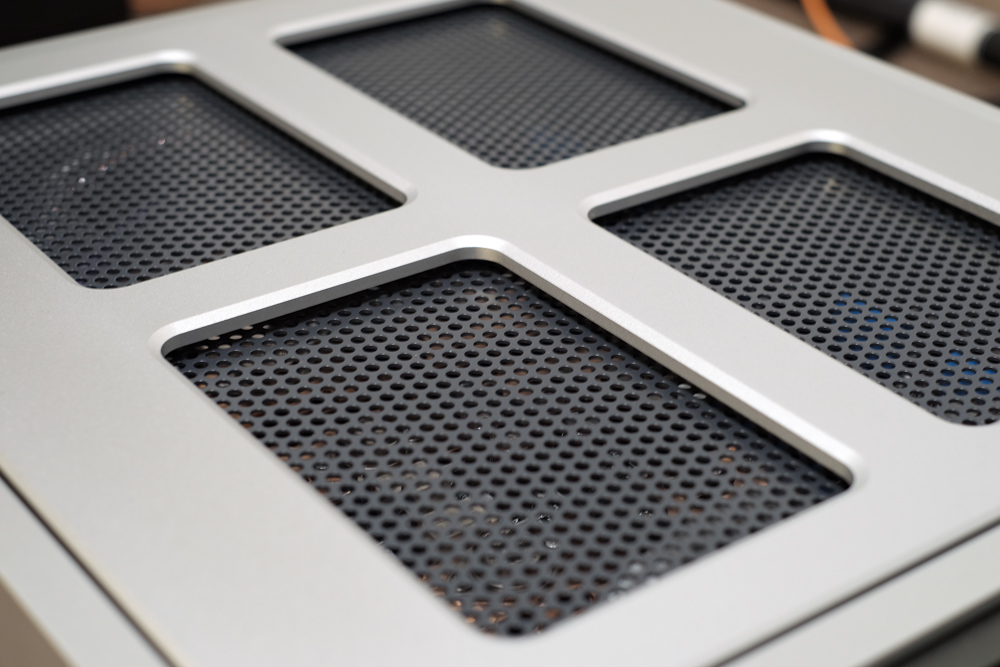
One thing I haven’t come across on an integrated amplifier before are the floating connector terminals and chassis panels, a strategy which Soulnote believes makes a sonic performance improvement (I believe Naim also employed a connector decoupling methodology, albeit internally via the sockets’ wiring). Said sockets and speaker binding posts are mounted on dedicated plates which are not bolted or screwed onto the chassis, they are decoupled from it. That decoupling is also applied on the A-3’s top panel and, amazingly, the chassis itself which is constructed from a combination of aluminium and steel panels. Soulnote states, “The amplifier block uses a three-point lateral sliding structure with titanium sliders”. Plus, the A-3 comes with a nicely finished wooden platform for further isolation. It’s obvious the company is making concerted efforts to dissipate vibrational energy in the areas it considers as crucial.
As far as these strategies are concerned, the sonic characteristics and efficacy may be open to subjective interpretation. Me, I’ll test the components as a holistic design, without going through the task of, somehow, coupling and decoupling the multiple panels. On paper, however, there’s merit in terms of managing vibrational distortions and Soulnote has made significant efforts to implement these schemes – the company’s engineers believe they contribute to the betterment of performance.
As I’ve alluded to above, the Soulnote engineers apply less commonly seen circuit design aspects to the A-3’s architecture. The company website lists a number of the key features with a reasonable amount of explanation, but I’ll go through the most significant points here.
The internal component layout shows a dual mono configuration, with each channel sporting its own high quality toroidal transformer (in addition to a smaller, yet still sizable, centrally located toroidal for the control electronics). Ditto for the capacitor bank and output transistor layouts. Even the Ground scheme is a dual channel configuration said to separate all the control, protection circuits, volume, and relays with a photocoupler while also being mindful of capacitance and inductive componentry.
On the subject of Ground, the A-3 features an overall AC Ground on/off switch (or Connection/Separation as Soulnote calls it) which has been designed to deal with ground loops, etc. Impressively, the component layout is mostly mirrored, showing typically Japanese exceptional attention to detail, especially seeing that this is an internal aspect only seen if you remove the top panel. Further, the left and right channel power supply’s ground is coupled to the lateral chassis panels via a ceramic washer insulation scheme which is said to act as “… a GND anchor”.
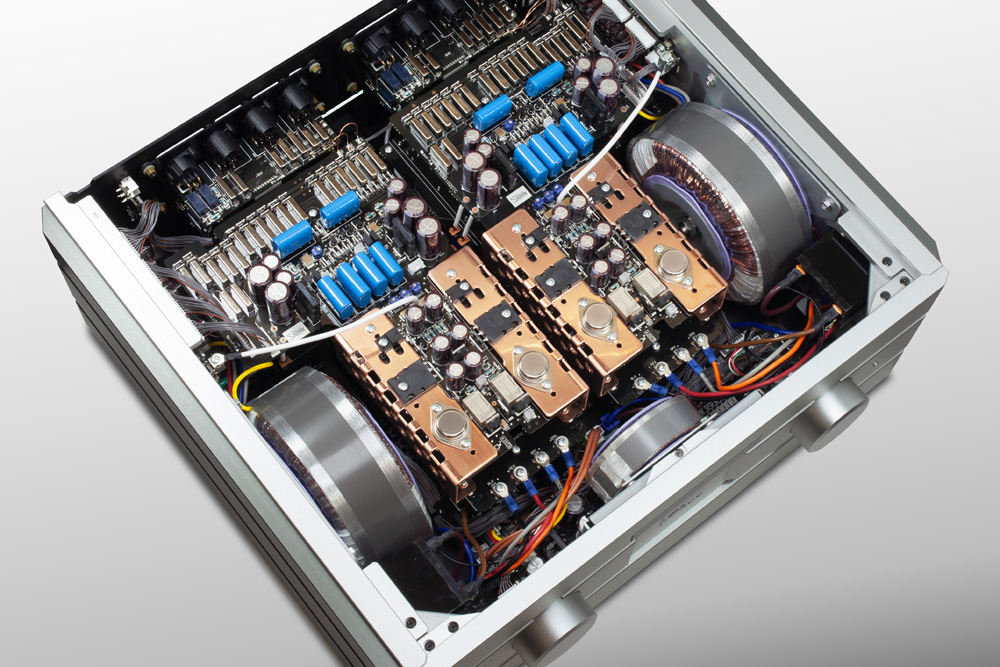
Under Kato-san’s leadership, Soulnote engineers developed a “high-gain-to-GND single-stage Type-R circuit” which employs largely high quality naked foil resistors in a non-NFB (Non Negative Feedback). In fact, resistors are also used for the A-3’s balanced volume control, which switches between various high precision naked foil resistors.
The A-3 is rated at 120 watts into 4 ohms (no 8 ohms rating provided). The frequency response spans from 2 Hz to 200 kHz at +/-3dB/1W/8 ohms while the Total Harmonic Distortion (THD) is said to be 0.27% at 1W/8 ohms and the Signal-to-Noise Ratio (SNR) is quoted as 110dB.
There’s no doubt the A-3 features a very strongly engineered power supply. It’s made up of two 700VA toroidal transformers which have been mounted in a vertical configuration on plates attached to the left/right side panels. This is done so that the “… magnetic field lines are parallel to the board”. The smaller control toroidal transformer is attached to its own plate which is adhered to the front panel.
Rather than using a small number of large ‘coke can’-sized capacitors, Soulnote believes in employing a large number of smaller capacitors for their faster reaction ‘speed’. To that end, the A-3 features a massive bank of 48 high voltage, 470 micro-farad foil filter capacitors per channel; yep, that’s 96 capacitors in the power supply in total. Further, the sheer number of capacitors is said to reduce the load on the power transformer and to “… further improved the real regulation of the ultra-powerful power transformer”.
Soulnote has selected ‘metal can’ TO3 transistors which are also employed in the driver and pre-driver stages (“ultra-powerful” TO3P type) in a four-stage Darlington configuration. The powerful high-current driver stages are said to provide expressive dynamics. The output stage features two bipolar TO3 transistors per channel in a Single-Ended Push-Pull (SEPP) configuration – one NPN and one PNP. This scheme is also used in the company’s massive M-3 flagship power amplifier. Power is supplied to the transistors via copper bus bars which also serve as the A-3’s heatsink. The transistors are mounted to go through the bus bar and onto the circuit board below, with the benefits according to Soulnote being, “This eliminates wiring, which is a drawback of the TO3 (Metal CAN-type) transistor, and helps overcome instability caused by the inductance component, while at the same time avoiding sound quality degradation caused by the insulation sheet dumping on the device.”
There are secondary technical and engineering characteristics of the A-3’s design which you can find on the company’s comprehensive website. There, Soulnote is sending a clear message that its products, at every level, from entry point Series 1 to the top-shelf Series 3, are a result of creative minds examining every aspect of design and then doing things a little differently.
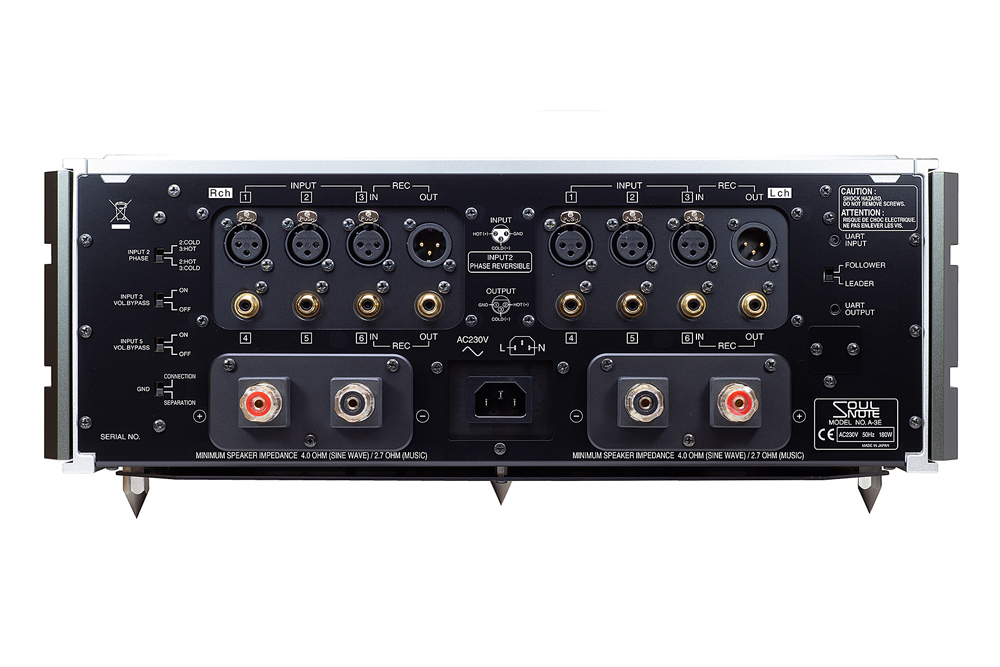
As far as connectivity, the A-3’s options are generous. There are three balanced XLR and three unbalanced RCA inputs (one input being a Record In with volume bypass for Record Out). The binding posts are of excellent quality and accept banana plugs, spades, and bare wire. An IEC socket accepts AC. A bank of switches can be toggled as follows: Input 2 Phase (XLR pin 2 hot or cold), Input 2 Volume Bypass, Input 5 Volume Bypass, Ground “Connection/Separation”, and a “Follower/Leader” switch which allows for setting up multiple A-3 configurations. The volume Bypass gain is set at 22dB. There are 3.5 mm minijack In/Out connections for remotely activating other Soulnote products.
Around the front, the A-3 features a small display window where red graphics display the chosen input and the numeric volume level. Small LEDs show Bypass and Record Out status. There’s a small Mute button and, of course, an On/Off switch. One large rotary knob provides input switching while the other adjusts the volume.
Once again, I’ll mention the A-3’s excellent build quality and attractive design. Despite all the floating elements and decoupled chassis panels, the A-3 feels superbly stiff and solid. It’s quite heavy too at 31kg. The quality carries across to the included remote control, which is fully featured and very elegantly styled. The A-3 can be set-up to sit on either flattened feet or on the supplied spikes.
Take Note
After firing up the A-3, pretty much from the get-go, I noticed the amplifier’s neutral and clear performance. The clarity was abetted by a strong sense of pace and rhythm, providing tight musical flow.
Power trio The Aristocrats’ “Bad Asteroid” from their Boing! We’ll Do It Live album absolutely demands a system which can do PRaT (Pace, Rhythm and Timing). That can be said about the entire signal chain, but it’s most important within the relationship of amplifier and speakers. Of course, I used the A-3 with my own reference, my beloved Wilson Audio Alexia V, however, I also tried it with a couple of other capable designs I had in for review throughout the A-3’s in-situ tenure. The amplifier’s quickness and expert handling of transients was always spot-on. On “Bad Asteroid”, neither the blinding speed of Guthrie Govan’s guitar, Bryan Beller’s bass underpinning or Marco Minneman’s pounding and music-reinforcing drum kit were rhythmically stunted by the A-3 in any way. There was excellent detail across those instruments too, with the fast transients presenting a snappy, jumpy snare and kick drum.
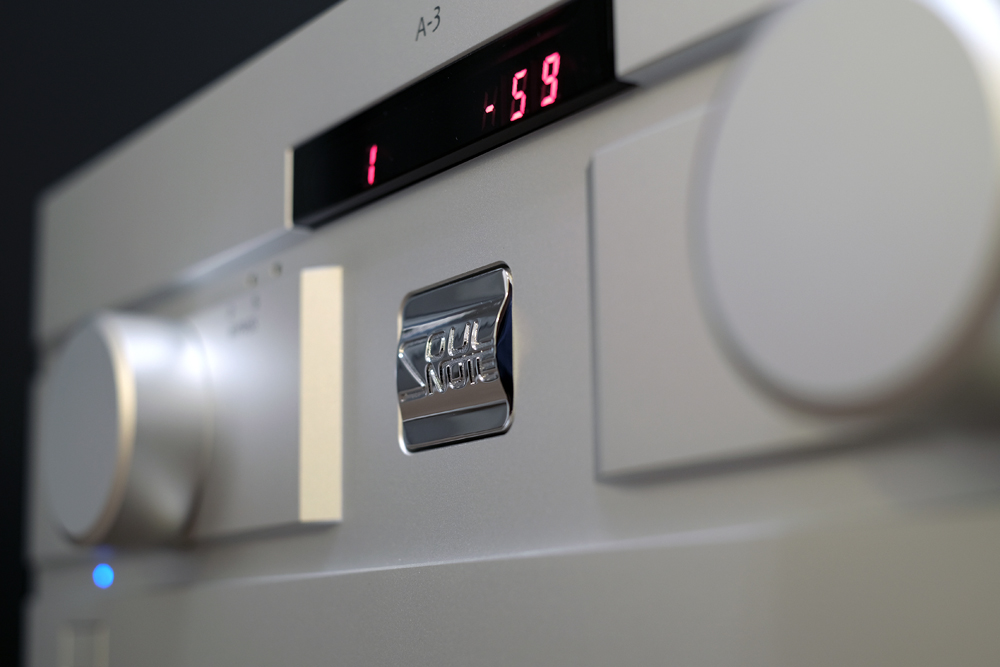
The A-3’s clarity throughout the midrange, of course, paid dividends with vocals, bringing them a tad forward and providing excellent presence and detail. While it’s become a bit of an audio show cliché, Dominique Fils-Aimé’s “Home”, from her superbly-produced Nameless album, is nevertheless a great jazz/blues track by the excellent singer. While the first bass and drum notes punch through quite satisfyingly, it’s Fils-Aimé’s voice which really stands out. It’s crystal clear, perfectly centred, and realistically portrayed. Her vocal technique, which ranges from middle lows to highs, her oscillations and controlled breathing are all delivered by the A-3’s firm handling of midrange and treble frequencies. Equally tight and snappy attack was shown with the clapping and percussion accents which popped against the backing instruments.
John Coltrane’s tenor sax was rendered with realism and impressive dynamic expression. On the 2012 Remaster of Blue Train, the title track undulated and swung with toe-tapping tempo while the recording’s liveness simulated a steamy jazz club in the hours after midnight. The backing band, all its members virtuosos in their own right, bopped and jived, keeping up with Coltrane’s sax acrobatics. The A-3 has a propulsive sound which provides the aural sensation of full tilt tempos.
While I’ve described the sense of rhythmic flow through the mids and highs, those traits are also maintained across the low frequencies. The bloomy (not boomy) weight does not match big muscle amps like my Gryphon Audio Antileon, or big Vitus amplifiers, or say, the bigger Krell sound of yore, but the marginal reduction in weight is made up for in terms of pace and speed in the bass. Plus, those are power amplifiers not integrated amplifiers – their sonic outcome is, of course, dependent on and tailored with, the preamplification companion.
The A-3 spatial presentation was quite generous in its expression of the recording’s soundstage dimensionality. Yet, the amp places even more importance on focus with tight placement of vocalists, instruments, and orchestras. In other words, the soundstage is always open and generous, but with a priority on the sharp focusing of images within it. On the album Gypsic, the “Csárdás” track, violinist Sarah Nemtanu is super-locked dead centre stage and accurately sized, while the piano (and also the hand clapping introduced later in the track) images just behind her, sounding big and bold. The piano is tonally correct and plays with proper weight through the lower keys and with excellent detail and timbre through the high notes.
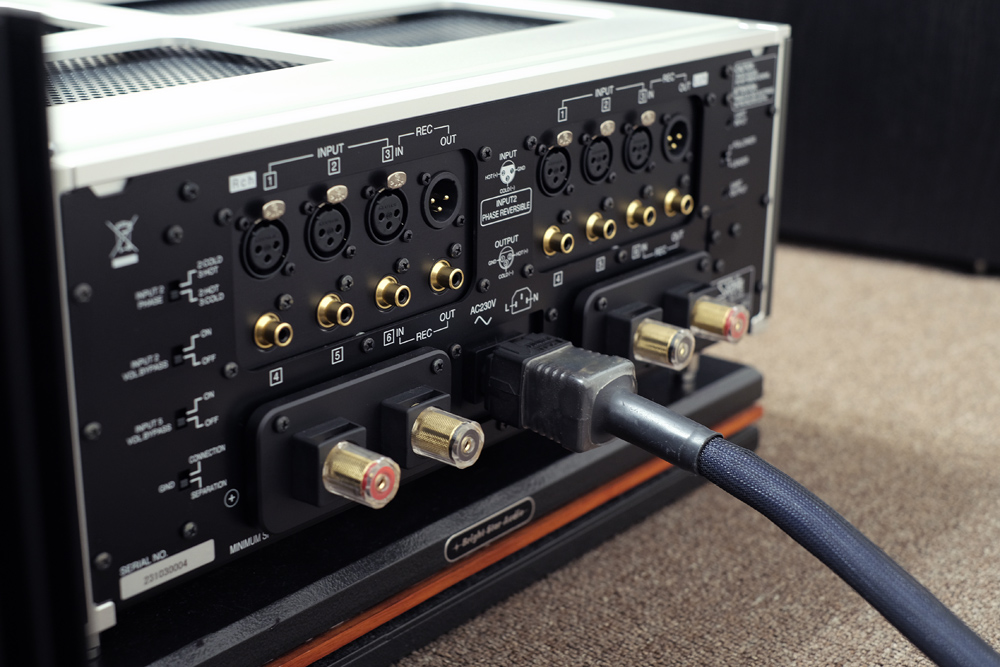
I also heard deep and precise placement of background ambient sounds (animals outdoors) on Ballaké Sissoko and Vincent Segal’s Musique de Nuit album, in particular the “Balazando” track, where the A-3 resolves the low level details that make the great sense of place on this cut. Then, Segal’s acoustic bass comes in with superb inner detail and attack on leading edge of notes, while later, as Sissoko joins in playing kora, the track gels into a cohesive musical experience with excellent detail, resolution, and spatial information.
Conclusion
The A-3 is an outstanding integrated amplifier stemming from breakout engineers who were previously embedded within the multi-level corporate structure of high profile multi-nationals. Now, Soulnote’s captains are steering the emerging niche entity through a confident incursion into the high-end market.
I remember a time when heated arguments among audio enthusiasts regarding the sonic differentiations between amplifiers were rife. One vocal camp asserted there were no sound differences between equally well-engineered amplifiers using solid state technology. An equally assertive tribe disputed this, contending the opposite viewpoint. These days, it could be said that it’s accepted, just about universally, that there are often significant differences between amplifiers in terms of sound performance.
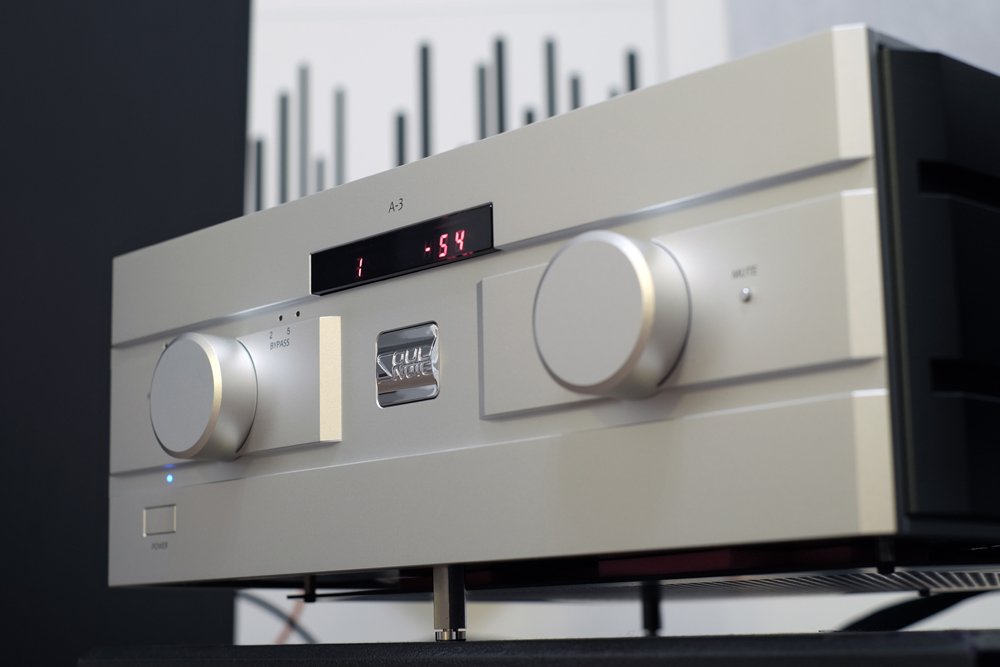
The A-3 states its own case very strongly. Sonically, the A-3 is capable of demonstrating a superbly balanced mix of refinement, purity, uncompromising musical information/detail, and precision. The A-3 is super-neutral, yet the Soulnote integrated amplifier nails the infusion of Soul in your music’s Notes.
… Edgar Kramer
This email address is being protected from spambots. You need JavaScript enabled to view it.
Associated Equipment
- Speakers — Wilson Audio Alexia V, Axis Loudspeakers VoiceBox S (nearfield monitor), Vermouth Audio Little Luccas Mk.II, Atacama stands
- Amplifier — Gryphon Audio Antileon EVO
- Preamplifier — Supratek Cortese, Totaldac d1-triunity (periodically, direct to amplifier)
- Sources — Digital: 432 EVO Aeon Mk.3 Reference Music Server/Roon Core, Yamaha CD-S2100 transport, Totaldac d1-triunity DAC. Analogue: Transrotor Crescendo with Konstant Studio controller, Reed 1X Tonearm with upgraded internal wiring, Shelter Harmony cartridge, The Funk Firm Houdini cartridge decoupler, Supratek Cortese & REDGUM Audio RGPH2 phono stages
- Processor — DEQX PreMate (part of arsenal/casual use)
- Cables — VYDA Laboratories Orion Silver Reference HFC IC and speaker cables, PSC Audio custom design XLR, Vermouth Audio Reference loom,ZenSati Zorro, Tubulus Concentus USB
- Audio Rack — SGR Audio Statement Model V, Aspire Audio Belgravia amplifier platform (customised for Gryphon Audio Antileon EVO), Stereotech Aluminar Dark 3-tier rack
- Acoustic Treatment — Vicoustic Multifuser Wood, Wavewood Ultra, Cinema Round Premium and Super Bass Extreme
- Miscellaneous — Silent Angel Bonn N8 Pro network switch, GigaWatt PF-1 EVO power strip, Les Davis Audio Viscoelastic CLD discs, VRC Vinyl Record Cleaning system plus miscellaneous accessories
Soulnote A-3 Integrated Amplifier
Price: AU$34,990
Australian Warranty: Two Years
Australian Distributor: Absolute Hi End
+61 488 777 999
www.absolutehiend.com
Soulnote Inc.
5-33-4 Sagamiono, Minami-ku
Sagamihara-shi, Kanagawa, 252-0303
Japan
www.kcsr.co.jp/eu_soulnote
